What is Borek? Everything You Need to Know About Turkey's Borek Culture
Borek is one of the most deeply rooted and characteristic flavours of Turkish cuisine. Borek, which is made by using various fillings between thinly rolled phyllo pastry, is an important part of Turkey's cultural and gastronomic heritage, with its simple production and rich variety. More than just a food, it has been on the tables throughout history and has become a tradition passed down from generation to generation. So, what is borek? Why is Turkish Borek famous? Let's explore together 👇
What is Borek?

Borek is a pastry that is cooked in the oven or oil by placing fillings such as minced meat, cheese, potato, spinach between the thin dough called yufka. The boiling method is also used in some regions. Borek, which takes its name from the Turkish verb 'bürmek', meaning to wrap to fold, has the meaning of wrapping something in the dough, regardless of its content and shape. In this respect, it can be defined both technically and culturally.
Consumed all over Turkey today, Borek is both a traditional food made at home and a product frequently encountered in Borek shops, pastry shops and street flavours. It has also become a recognised and popular food in many countries where the Turkish diaspora lives.
History and Origin of Borek
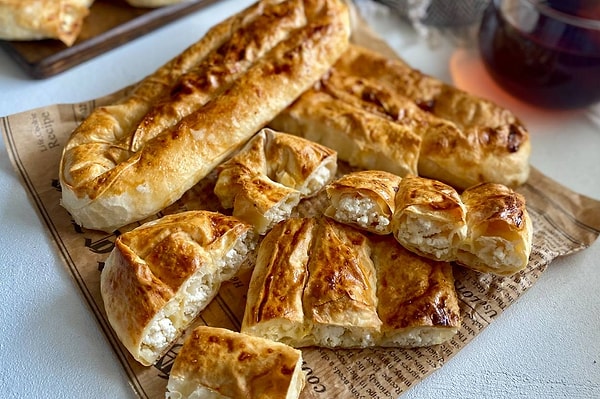
The Adventure from Central Asia to Anatolia
The origin of Borek dates back to the nomadic lifestyle of the Turks in Central Asia. Nomadic communities needed long-lasting and easily transportable food. For this reason, foods made with thinly rolled dough (yufkas) and various mortars placed in them were ideal. It evolved from its predecessors in Central Asia with names such as ‘katmer’, “şebit” and ‘çörek’ and reached the form of Borek over time.
Borek in the Ottoman Palace
Borek experienced a great development, especially during the Ottoman period when culinary arts were at their peak. There were special craftsmen called ‘borekçi’ in the palace kitchen, and these craftsmen used to equip the sultan's tables by making varieties such as Su Boregi, Kiymali Borek and Saray Boregi. In some palace records, even the number and content of the pastries made daily are written in detail.
From this period onwards, Borek became a favourite not only for the general public but also for the elite class. Thanks to the vast geography of the Ottoman Empire, the Borek culture spread to the Balkans, the Middle East and North Africa, and each region enriched the Borek culture by adding its own interpretation.
Turkey's Pastry Culture
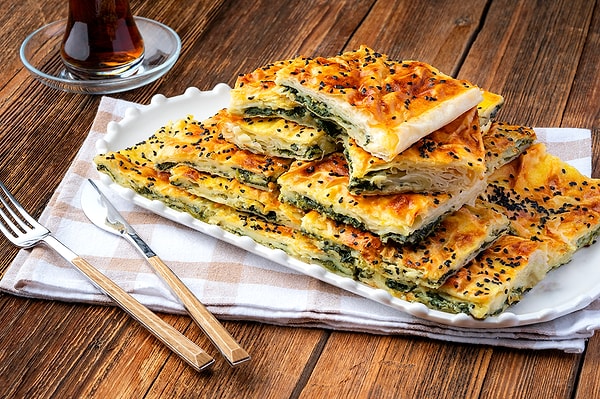
Pastry and Daily Life
In Turkey, pastry is not only a special occasion dish, but also a flavour that you can encounter at every moment of daily life. From breakfast to dinner, from guests to street food, Borek can be consumed at every meal and in every environment.
While cheese or potato pastry with tea is usually preferred for breakfast in the morning, minced meat pastry and buttermilk menu is quite common in a patisserie at noon. In the evening, homemade water pastry cooked in the oven and served hot is a classic menu in many homes.
Social and Cultural Role
In Turkish culture, Borek is also an important symbol of hospitality. The expression ‘opening a Borek for a guest’ is one of the most beautiful ways to show that someone is appreciated. In addition, it has become a tradition to prepare Borek for many social events such as engagement, promise, mevlit, feast morning, and after-funeral treats.
In many parts of Anatolia, especially on days when women come together to roll out dough, making Borek is also considered a socialising activity. In this respect, Borek is not only a meal, but also a means of coming together, sharing and strengthening cultural ties.
Types of Borek: Regional Richness and Diversity of Forms
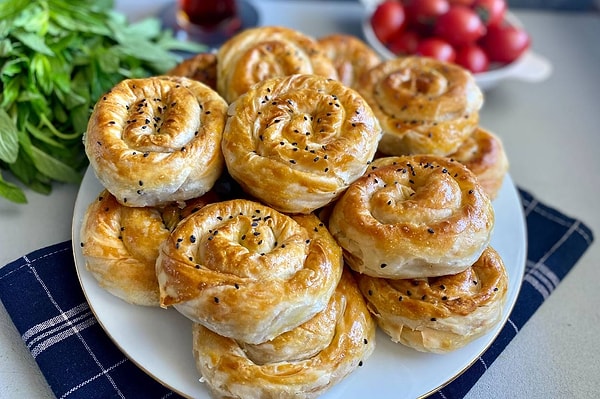
Every region in Turkey has its own unique pastry varieties. At the same time, it is possible to encounter pastries in very different forms according to the method of making and the filling material used.
The Most Common Types of Borek
Su Böreği: It is a labour-intensive and delicious pastry in which layers of phyllo pastry are first boiled and then folded with butter and cheese filling. It is especially preferred on festive mornings and special occasions.
Kol Böreği: The filling is put into the phyllo pastry, wrapped in the form of a long strip and placed on the tray in the form of a spiral and baked in the oven.
Sigara Böreği: The phyllo pastry cut into triangles is filled with cheese filling, wrapped like a cigarette and fried. It is often preferred thanks to its practicality.
Sariyer Böreği: Known for its minced meat filling, it is one of the iconic pastries of Istanbul with its abundant fat and crispy structure.
Gül Böreği: It is prepared by filling the phyllo pastry with filling and wrapping it in the shape of a rose. It provides a visually elegant presentation.
Paçanga Böreği: Made with bacon and cheddar cheese, cooked by frying, it is a high-calorie and satisfying variety.
Çiğ Borek: It is a type of Borek, especially in Eskisehir and Crimean Tatar cuisine, made by putting the minced meat filling into the dough raw and frying it in oil.
Laz Böreği: It is a type of sweet Borek with custard inside, which is unique to the Black Sea cuisine. It is sweetened with sherbet.
Local Variations
In every city, even in every district, pastries are made with different techniques, fillings and presentations. For example
Kayseri Yağlama: It is a local type made with layers of phyllo pastry and prepared with minced meat filling.
Adana Su Boregi: Slightly spicy, rich in oil and made with hand-rolled phyllo pastry.
Trakya Tepsi Böreği: A simple but delicious variety usually made with curd cheese and dill.
Yufka: Böreğin Kalbi

Yufka, the main ingredient of Borek, is the cornerstone of this business. Rolling out phyllo requires great mastery in Anatolian cuisine. The dough should be neither too thick nor too thin. Creating layers with butter or oil between each layer directly affects the flavour of the Borek.
Pastries made with homemade phyllo dough are still prepared with traditional methods, especially in rural areas. Nowadays, thanks to ready-made phyllo pastry, Borek making has become practical and widespread.
Cooking Techniques
Borek cooking methods vary according to the type of pastry and phyllo structure:
Baking in the oven: It is the most common method. It is used in varieties such as Kol Boregi, Su Boregi, Gul Boregi.
Frying in oil: It is used in types such as Sigara Boreh,, paçanga and Cig Borek.
Boiling + oven: In special recipes such as Su Boregi, the phyllo pastry is boiled and then baked.
Tava Böreği: Especially in practical recipes, Borek is prepared using a frying pan.
What Goes with Turkish Borek?
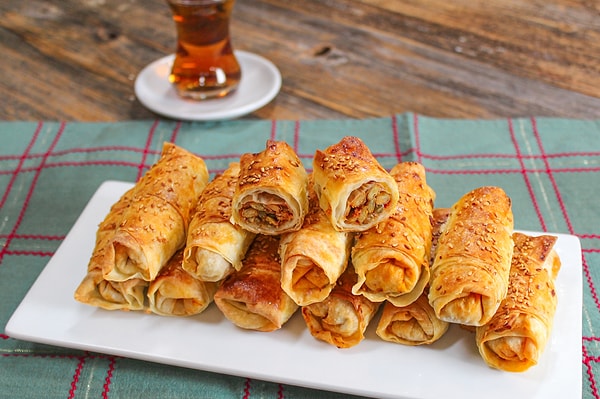
One of the most compatible drinks with Turkish Borek is brewed tea. Especially at breakfast or afternoon tea, the duo of Borek and tea is essentail. In addition, ayran, yoghurt and fruit juices are also frequently consumed with Borek. Tea or black coffee is generally preferred with sweet boreks.
Globalisation of Borek
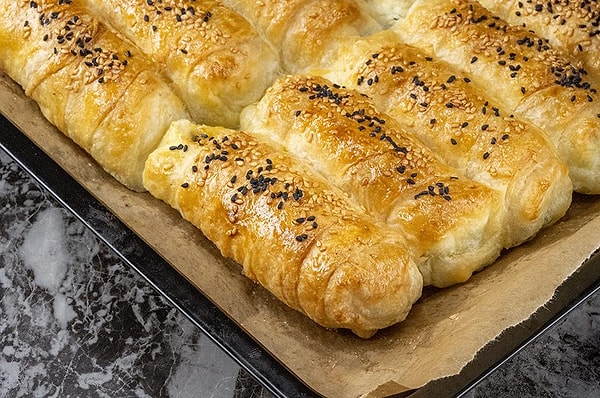
Borek is known with different versions not only in Turkey but also in the Balkans, Middle East and Eastern Europe. It is possible to encounter names such as ‘burek’ in Serbia and Bosnia, “bougatsa” in Greece, and ‘brik’ in Arab cuisine. However, the Borek culture in Turkey is one of the most unique examples in this geography with its diversity and historical richness.
Keşfet ile ziyaret ettiğin tüm kategorileri tek akışta gör!

Send Comment